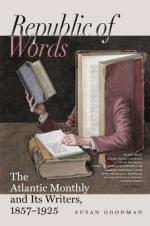Firdousi, the Persian Homer, has written in the Shah Nameh the annals of the fabulous and heroic kings of the country: of Karun, (the Persian Croesus.) the immeasurably rich gold-maker, who, with all his treasures, lies buried not far from the Pyramids, in the sea which bears his name; of Jamschid, the binder of demons, whose reign lasted seven hundred years; of Kai Kaus, whose palace was built by demons on Alberz, in which gold and silver and precious stones were used so lavishly, and such was the brilliancy produced by their combined effect, that night and day appeared the same; of Afrasiyab, strong as an elephant, whose shadow extended for miles, whose heart was bounteous as the ocean, and his hands like the clouds when rain falls to gladden the earth. The crocodile in the rolling stream had no safety from Afrasiyab. Yet when he came to fight against the generals of Kaus, he was but an insect in the grasp of Rustem, who seized him by the girdle, and dragged him from his horse. Rustem felt such anger at the arrogance of the King of Mazinderan, that every hair on his body started up like a spear. The gripe of his hand cracked the sinews of an enemy.
These legends,—with Chiser, the fountain of life, Tuba, the tree of life,—the romances of the loves of Leila and Medschun, of Chosru and Schirin, and those of the nightingale for the rose,—pearl-diving, and the virtues of gems,—the cohol, a cosmetic by which pearls and eyebrows are indelibly stained black,—the bladder in which musk is brought,—the down of the lip, the mole on the cheek, the eyelash,—lilies, roses, tulips, and jasmines,—make the staple imagery of Persian odes.
The Persians have epics and tales, but, for the most part, they affect short poems and epigrams. Gnomic verses, rules of life, conveyed in a lively image, especially in an image addressed to the eye, and contained in a single stanza, were always current in the East; and if the poem is long, it is only a string of unconnected verses. They use an inconsecutiveness quite alarming to Western logic, and the connection between the stanzas of their longer odes is much like that between the refrain of our old English ballads,
“The sun shines fair on Carlisle wall,”
or
“The rain it raineth every day,”
and the main story.
Take, as specimens of these gnomic verses, the following:—
“The secret that should not be blown
Not one of thy nation must
know;
You may padlock the gate of a town,
But never the mouth of a foe.”
Or this of Omar Chiam:—
“On earth’s wide thoroughfares
below
Two only men contented go:
Who knows what’s right and what’s
forbid,
And he from whom is knowledge hid.”
Or this of Enweri:—
“On prince or bride no diamond stone
Half so gracious ever shone,
As the light of enterprise
Beaming from a young man’s eyes.”




